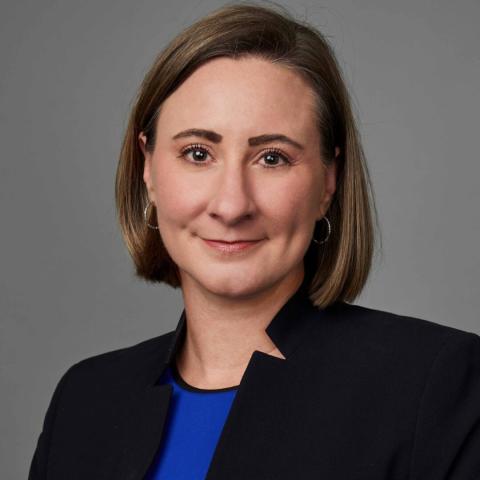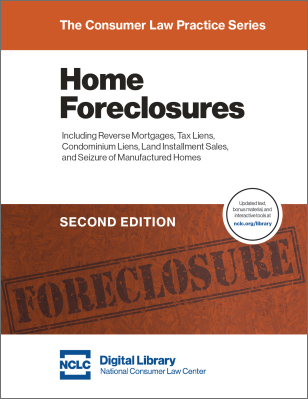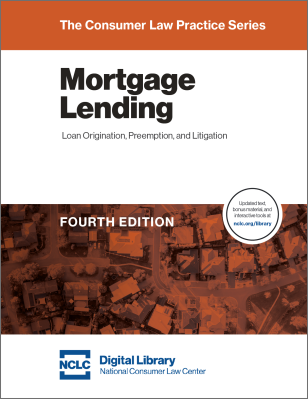While a reverse mortgage may be an attractive option for homeowners in financial difficulty who wish to remain in their homes during their lifetime, too often this goal is frustrated. Even with a reverse mortgage, homeowners can lose possession of a home for any number of reasons:
- Delinquency on property taxes, homeowner’s insurance, homeowner association fees, and other property charges;
- Failure to maintain the home properly or perform needed home repairs;
- A homeowner’s absence from the home for the majority of the year, or if the absence is health-related, after a one-year absence if no other borrower is listed on the reverse mortgage;
- Death of one of the homeowners where the other spouse is not listed on the reverse mortgage.
These foreclosures disproportionately affect people of color. A July 2019 USA Today article showed that communities of color had foreclosure rates six times as high as majority white neighborhoods. As with other mortgages, foreclosure on reverse mortgages have been put on hold due to the pandemic until June 30, 2021. With the deadline approaching, this article provides information on the risks of foreclosure even for reverse mortgages, sets out new protections from that foreclosure, and also summarizes other rights to avoid foreclosure on a reverse mortgage.
The nation’s major reverse mortgage program, administered by HUD, is called the Home Equity Conversion Mortgage (HECM) program. HECM reverse mortgages are made by private lenders, but are governed by rules set out by HUD. Two recent HUD actions however significantly reduce the risk of subsequent foreclosure for homeowners and surviving spouses under the HECM program.
New Protection Where One Spouse Moves into a Long-Term Care Facility
HUD’s May 6th Mortgagee Letter 2021-11 allows non-borrowing spouses of reverse mortgage borrowers to remain in their home after the borrower moves into a long term care or other healthcare facility. The new policy applies to all HECM loans that comprise a valid first lien security interest in the home, and lenders can comply effective May 6th, but must comply by September 3, 2021.
If two borrowers are listed on a reverse mortgage and one of them passes away or no longer resides in the home, the remaining borrower has rights under the reverse mortgage to remain in the home. Problems arise, however, where only one borrower is listed on the reverse mortgage and that person’s spouse is also living in the home. Under the prior policy, if the spouse listed on the mortgage spends more than a year in a long-term care or other health facility, the loan comes due and the non-borrowing spouse can be forced to leave the home.
The new HUD policy allows for a non-borrowing spouse to remain in the home as long as the non-borrowing spouse continues to occupy the home as a principal residence, is still married, and was married at the time of the issuance of the reverse mortgage to the spouse listed on the reverse mortgage. In addition, the loan that cannot be due and payable for other reasons. Once the borrowing spouse passes away, the non-borrowing spouse need no longer possess or demonstrate the ability to obtain good and marketable title to the property or a legal right to remain in the property for life.
For HECM mortgages entered into prior to August 4, 2014, while the non-borrowing party also must have been married to the borrowing spouse at the time of the mortgage and remain married while the borrowing spouse is absent in the healthcare facility, an exception is made for couples that could not be legally married at the time of the reverse mortgage origination because of state law restrictions of same sex couples. For the exception to apply, the couple had to be in a committed relationship akin to marriage at the time and must be married at the time the borrowing spouse is in the health care facility. For a discussion of foreclosure based on non-occupancy, see generally NCLC's Home Foreclosures § 14.3.3.2.
Expanded Protections for Non-Borrowing Spouse Upon Borrowing Spouse’s Death
HUD’s May 6th Mortgagee Letter 2021-11, effective May 6, 2021, but with a mandatory compliance date of September 3, 2021, also removes the largest remaining roadblock to non-borrowing spouses keeping their home after the borrower dies. As with the long-term care situation, where only one spouse is listed as a borrower on a HECM mortgage, issues arise where that spouse passes away and the non-borrowing spouse wishes to remain in the home. HECM reverse mortgage loans generally must be paid off when the last borrower dies, sells, or permanently relocates from the home.
Since August 4, 2014, HECM loan documents explicitly allow for a non-borrowing spouse to remain in the home after the borrower’s death, until the non-borrowing spouse either dies or moves out. Mortgagee Letter 2021-11 removes the major remaining impediment to non-borrowing spouses keeping their home after the borrower dies. Non-borrowing spouses will no longer have to provide proof of “good and marketable title or a legal right to remain in the home,” which often required an expensive probate filing and had pushed many spouses into foreclosure.
Process for HECM Mortgages Entered into Prior to August 4, 2014
In the past HECMs issued before August 4, 2014 did not provide protections for non-borrowing spouses living in the home after the death of the borrower. More recently HUD allowed such surviving non-borrowing spouses to remain in the home under the Mortgagee Optional Election (MOE) if offered by their loan servicer. The MOE offering is discretionary with the lender. In order to avoid being financially penalized by HUD, the lender must either initiate foreclosure or assign the loan to HUD through the MOE process within 180 days of the borrower’s death.
HUD issued revised guidelines on September 23, 2019, announced in Mortgagee Letter 2019-15, requiring servicers to notify borrowers about the existence of the MOE option and to request the names of any non-borrowing spouse living in the home who may potentially qualify for the option. The letter also indicated that there is no hard deadline for servicers to elect to offer a MOE, although lenders after March 21, 2020, may face interest curtailment due to their delay. Lenders may choose to make the MOE election available even after starting the foreclosure process.
As is now the case for HECMs issued after August 4, 2014, non-borrowing spouses need not provide proof of marketable title or a legal right to remain in the home in order to be eligible for the MOE program. The surviving non-borrowing spouse must still be living in the principal residence and be married at the time of the mortgage issuance and still married at the time of the borrower’s death—subject to the exception where state law prohibited marriage of same-sex couples. The loan also cannot be due and payable for other reasons.
If the non-borrowing spouse qualifies for the MOE, the due and payable status on the loan will be deferred and the loan will not be subject to foreclosure until the spouse moves out of the home, dies, or fails to meet the terms and conditions of the loan, including paying the property charges. Though the spouse is required to meet the financial obligations of the loan (i.e., payment of ongoing property charges, home maintenance), they will not receive any proceeds from the HECM. The non-borrowing spouse must certify annually that these conditions for deferral continue to be met. For a discussion of foreclosure based on death of one borrower, see generally NCLC's Home Foreclosures § 14.3.3.3.
Avoiding Foreclosure for Unpaid Property Taxes, Other Property Charges
A reverse mortgage is subject to foreclosure for unpaid property charges, including property taxes, homeowner’s insurance, homeowner association fees, and the like, and for failure to maintain the home properly or perform needed home repairs. One way to avoid such a foreclosure is, at the time the mortgage is issued, the lender can set aside funds from the available reverse mortgage’s principal limit to pay these expenses during the homeowner’s expected loan term.
If the homeowner still falls behind on these property charges, foreclosures may result. For property charge defaults for HECM mortgages, homeowners have certain protections. Typically, instead of declaring a delinquency, the lender elects to pay outstanding property charges by withholding amounts from monthly payments or by charging amounts to a line of credit. This solution works so long as loan funds remain available to draw.
When the available credit on the reverse mortgage is insufficient to cover the outstanding property charges, HUD generally requires lenders to advance their own funds, known as “loan advances” or “corporate advances,” to pay the property charges. Once there are no longer sufficient funds in the available credit, the loan is then in “default” and servicers will submit a due-and-payable request to HUD, for its approval, which will lead to acceleration of the debt and foreclosure, unless the servicer requests an extension of the foreclosure timeline for loss mitigation as outlined in Mortgagee Letter 2015-11 and Mortgagee Letter 2016-07.
Once the borrower misses a payment, the servicer will provide notice of the property charge delinquency. This letter should include information on money advanced to cover the property charge and any loss mitigation the lender may offer. If the borrower does not cure the default, the loan may be called due and the servicer must send a due and payable notice. The due and payable notice will give the borrower thirty days to respond, outline available loss mitigation options, and outline the option to sell the home or execute a deed in lieu of foreclosure. Lenders must also refer borrowers to a HUD-approved housing counseling agency prior to initiating foreclosure.
The lender can request an extension of the foreclosure timeline to engage in loss mitigation. HUD has outlined several loss mitigation options that lenders may use to address outstanding property charge defaults: (1) establishing a realistic repayment plan for delinquent property charges; (2) referring borrowers to HUD-approved housing counselors or other local resources to resolve the delinquency or to identify and obtain funds to pay delinquent property charges; (3) refinancing the HECM with a new HECM if there is sufficient equity to satisfy the existing mortgage and delinquent property charges; (4) extending foreclosure timeframes for certain “at risk” mortgagors; and (5) implementing a mortgagee-funded cure of the default. HUD’s regulation states that the loss mitigation options are permissive, at the discretion of the lender, not mandatory.
Borrowers also have the option to cure the default and reinstate the loan, even after foreclosure has been initiated, subject to three limitations: (1) the loan was not reinstated in the past two years; (2) the reinstatement will not prevent the loan from becoming due and payable at a later date; and (3) reinstatement will not adversely affect the priority of the lien.
A servicer’s failure to follow these HUD guidelines may give rise to a defense to the foreclosure, just as it does in the foreclosure of forward mortgages. Although homeowners do not have a private right of action to enforce the HUD guidelines, many courts have held that the servicer’s failure to follow these guidelines provides a defense to a foreclosure.
For more details on defenses to a property charge foreclosure, with citations to appropriate regulations, see NCLC’s Home Foreclosures §§ 14.3.1, 14.3.2. Those sections also examine solutions based on refinancing the reverse mortgage into a larger reverse mortgage, local aid programs, payment plans, mortgagee-funded cures, and at-risk extensions.
For More Information
National Consumer Law Center, Home Foreclosures Chapter 14 is a detailed treatment of all foreclosure issues relating to reverse mortgages. See in particular §§ 14.3.3.2, 14.3.3.3 and 14.3.3.4.
Also of relevance is NCLC’s Mortgage Lending Chapter 9, concerning the origination of reverse mortgages. See in particular §§ 9.3 and 9.7.2. See also NCLC’s Mortgage Servicing and Loan Modifications.
A helpful handout for clients is NCLC’s Fact Sheet: Are You a Reverse Mortgage Non-Borrowing Spouse? Tips to Help You Remain in Your Home, February 2020.




